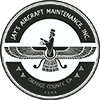The minimum equipment list (MEL) is intended to permit operations with certain inoperative items of equipment for the minimum period of time necessary until repairs can be accomplished. It is important that repairs are accomplished at the earliest opportunity in order to return the aircraft to its design level of safety and reliability.
The MEL is based on the MMEL(Master Minimum Equipment List), a document published by the FAA for each aircraft(the large ones)and adapted by the operators to their specific operation and type of fleet, then submitted to the FAA for approval.
For large operators (large airplanes with redundant systems)the use of the MEL can save millions of dollars due to factors like:
- The aircraft can take off in a regular passenger flight with inoperative systems, complete its schedule and reach the home base where the deffered item is cleared(repaired).This permits the minimal allocation of parts at every station.
- Delays or even cancellations can be avoided by deferring last minute reported discrepancies.
- Only parts that are used for no go items (for systems that are not in the MEL) are allocated at line stations.
- When inspecting aircraft operating with an MEL, the holder of an IA should review the document where inoperative items are recorded (aircraft maintenance record, logbook, discrepancy record, etc.) to determine the state of airworthiness with regard to those recorded discrepancies. Inspections of aircraft with approved MELs will be in accordance with 14 CFR under which the MEL was issued.
- Those MELs specifying repair intervals through the use of A, B, C, D codes require repairs of deferred items at or prior to the repair times established by the letter designated category. In such instances, some items previously deferred may not be eligible for continued deference at the inspection or may require additional maintenance. Where repair intervals are not specified by codes in the MEL, all MEL-authorized inoperative instruments and/or equipment should be repaired or inspected and deferred before approval for return to service.
- Aircraft established on a progressive inspection program require that all MEL-authorized inoperative items be repaired or inspected and deferred at each inspection whether or not the item is encompassed in that particular segment.
4. When inspecting aircraft operating without an MEL, 14 CFR part 91, section 91.213(d), allows certain aircraft not having an approved MEL to be flown with inoperative instruments and/or equipment. These aircraft may be presented for annual or progressive inspection with such items previously deferred or may have inoperative instruments and equipment deferred during an inspection. In either case, the holder of an IA is required by 14 CFR part 43, section 43.13(b) to determine that:
- The deferrals are eligible within the guidelines of that rule.
- All conditions for deferral are met, including proper recordation in accordance with 14 CFR part 43, sections 43.9 and 43.11; and
- Deferral of any item or combination of items will not affect the intended function of any other operable instruments and/or equipment, or in any manner constitute a hazard to the aircraft. When these requirements are met, such an aircraft is considered to be in a properly altered condition with regard to those deferred items.
It is important after repairing or clearing a deferred item to use the reversal procedure of the deferral. This means to return the aircraft to the original configuration: for example, CB´s (circuit breakers) collared for deactivation must be removed and the CB reset, operating placards also must be removed, etc. For larger aircraft with more complex systems this is more critical due the deactivation and not re-activation may affect other systems.
Minimum Equipment Requirements for General Aviation Operations Under FAR Part 91:
Acceptable methods for the operation of aircraft under Federal Aviation Regulations Part 91 with certain inoperative instrument and equipment, which are not essential for safe flight:
Conducting operations with an MEL as authorized by FAR 91.213(a) or without an MEL as authorized by FAR 91.213


